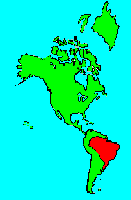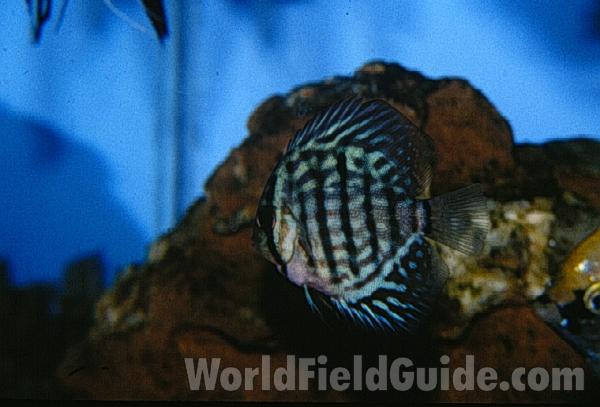SPECIES INFO
Common discus (Symphysodon aequifasciata) originated in the Amazon River and its tributaries. In the wild these flat bodied fish are designed to slip in narrow crevices between tree roots, and thus be safe from predators. The green discus term normally refers to the Symphysodon aequifasciata aequifasciata subspecies from the central Amazon.Discus (Symphysodon) genus contains what hobbyists sometimes call the king of the aquarium fish. These are very beautiful aquarium fish. The natural species and subspecies per Burgess and Axelrod as noted in their 1985 atlas of fresh water aquarium fish are:
Symphysodon aequifasciata aquifasciata - Green discus - Central Amazon
Symphysodon aequifasciata axelrodi - Brown discus - Lower Amazon
Symphysodon aequifasciata haraldi - Blue discus - Upper Amazon
Symphysodon discus discus - Red or Heckel - Rio Negro and Rio Trombetas
Symphysodon discus willischwartzi - Pineapple discus - Rio Abacaxis
The aequifasciata complex has 9 dark bands on the body.
The discus complex has only 3 dark bands on the body.
Migdalski spells the genus name as follows: Symphosodon
South American Cichlids have been separated from the African Cichlids to facilitate study of this large family. Many popular freshwater aquarium fish such as the Severum, Discus, Oscar, and Angel Fish are included in the South American Cichlids.
Cichlidae group of African and South American freshwater fish are a favorite with tropical fish fanciers because of their many nice colors. This is a very large family with numerous species.
To facilitate study of this family, we have divided the Cichlidae into sections based on the geographical origin of the species. This helps somewhat, but one must remember that quite a few of the species have been introduced beyond their native continents.
Perch-like Fish, Order Perciformes, are the largest order of fish in both freshwater and shallow saltwater. Most of the conventional fish belong to this order. The bass, bluegills, perch and crappies of freshwater plus the groupers and sea bass of salt water belong to this order. The fish all have spiny rays in their fins and the tail fin has seventeen rays. There are approximately 150 families. Herein, we have placed the families in alphabetical sequence within this order. (In some instances the typical taxonomic sequence of families is not much help. Consider, for example, that the barracudas are usually placed between the mullets and the threadfins.)
Bony fish, Class Teleostomi, are a class of chordates that include the majority of fish-like animals found on earth. They are characterized by a bony jaw and a bony skeleton. They are found in both fresh and marine waters.
Backboned Animals (Phylum Chordata) are the most advanced group of animals on earth. These animals are characterized by having a spinal cord or backbone. Most members have a clearly defined brain that controls the organism through a spinal cord. Fish, amphibians, reptiles, birds, and mammals are in this phylum.
Currently, some taxonomists believe that the fish should be divided into two groups (sharks and regular fishes) and that there are some other primitive groups in the phylum such as hagfish or lampreys.
Animal Kingdom contains numerous organisms that feed on other animals or plants. Included in the animal kingdom are the lower marine invertebrates such as sponges and corals, the jointed legged animals such as insects and spiders, and the backboned animals such as fish, amphibians, reptiles, birds, and mammals.


